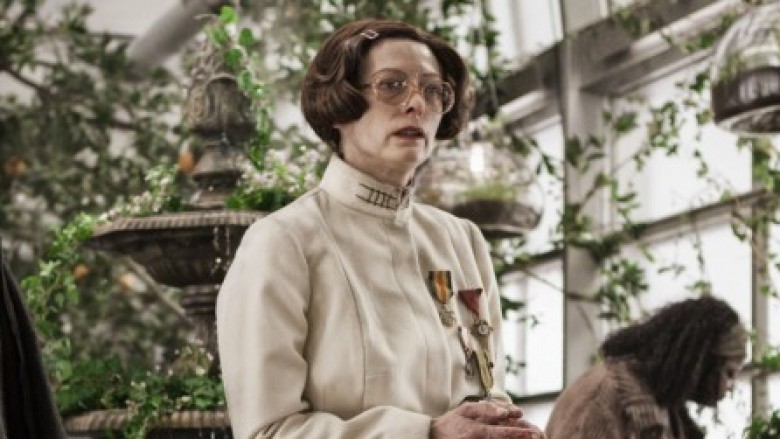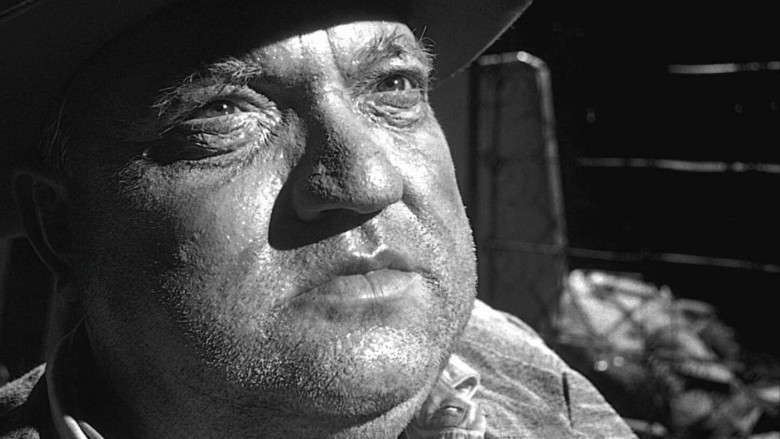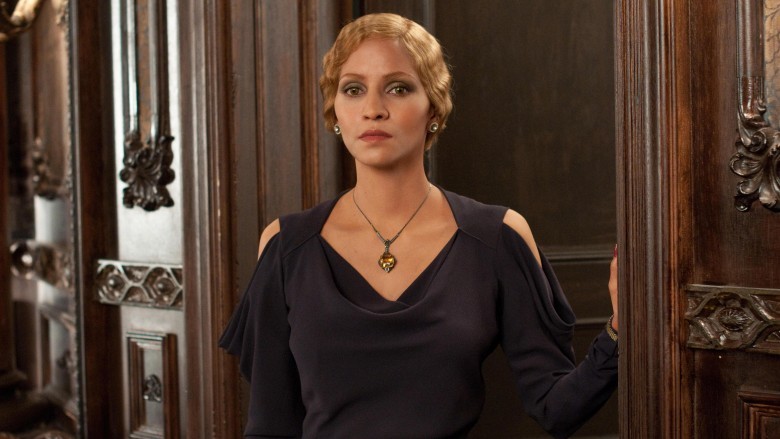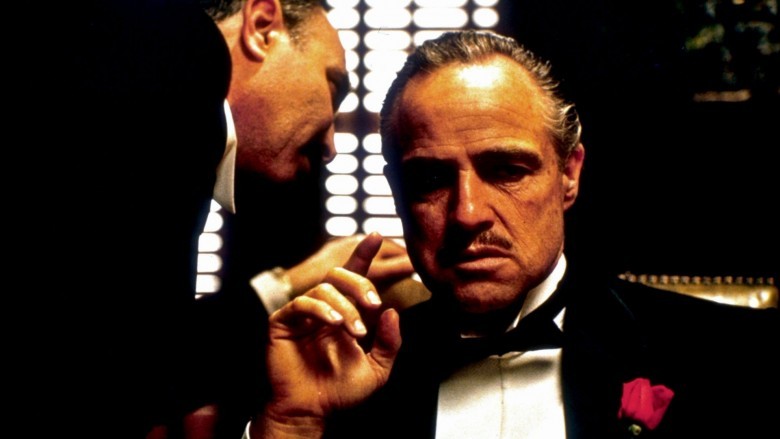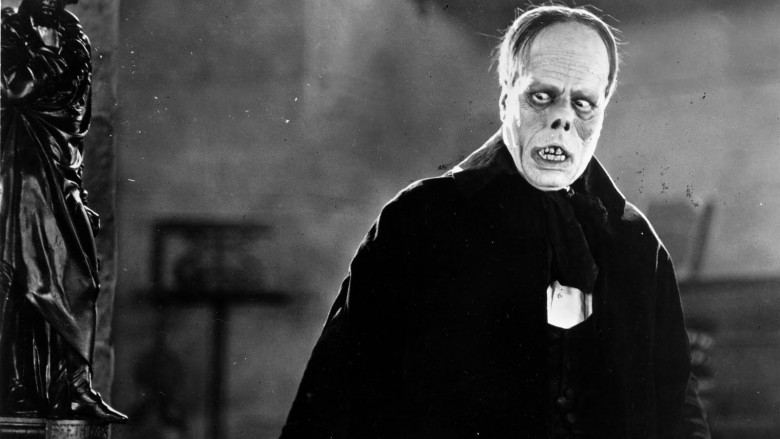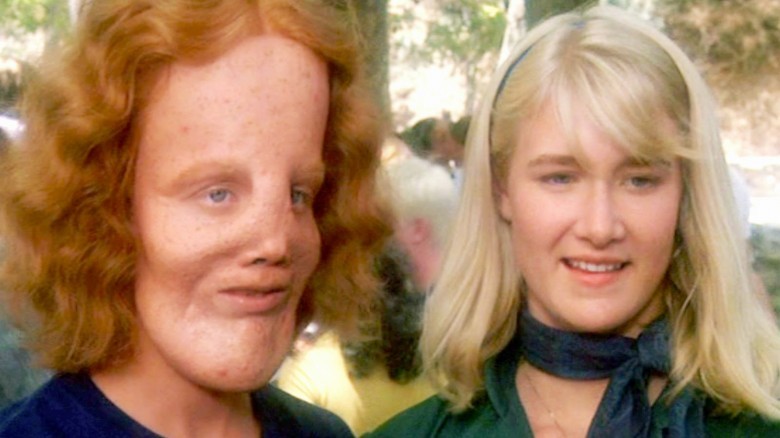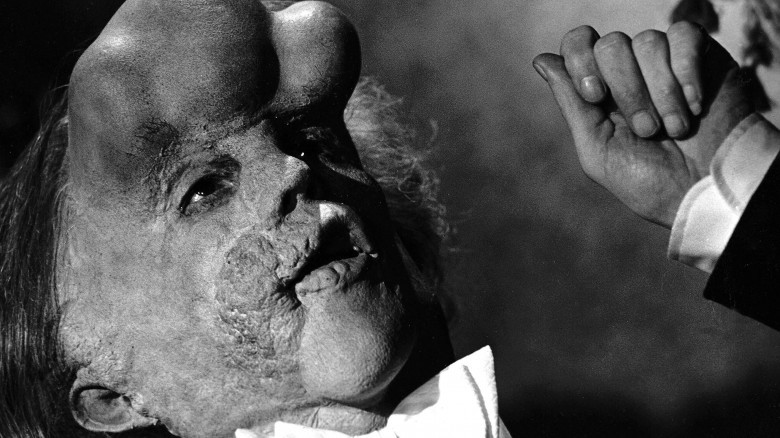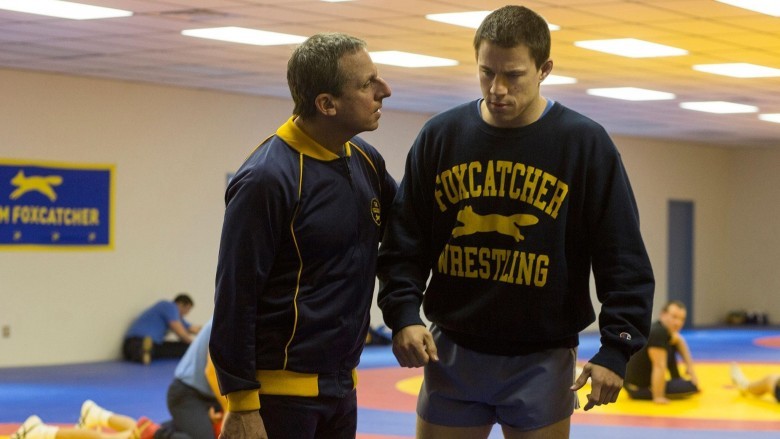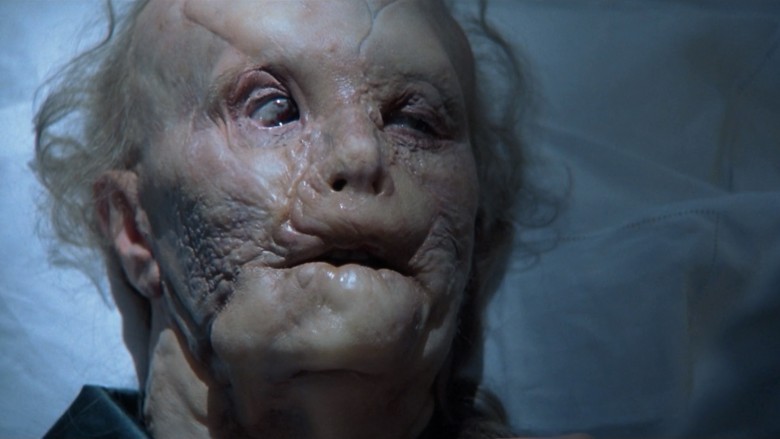Actors Who Underwent Intense Facial Transformations For A Role
When people talk about amazing actors, they focus on stars who undergo incredible physical transformations, like Christian Bale becoming a skeleton for The Machinist or Chris Pratt turning into a Greek god for Guardians of the Galaxy. But acting ain't just about the body. In fact, an actor's most important feature is his or her face. Ever since the days of silent cinema, movie stars have been using makeup to alter their appearance, and with the help of a fake nose or an artificial forehead, an actor can transform into a completely different being altogether.
Orson Welles – almost every movie he ever made
We all have our little peculiarities, our own unique issues when it comes to body image. Some of us feel uncomfortable with our waistlines, while others can't stand the way their hair looks. As for Orson Welles, the respected actor-director couldn't stand the sight of his own nose. According to writer and editor Jeff Stafford, Welles once declared, "My own nose is nothing," bemoaning the fact that his snout hadn't "grown one millimeter since infancy."
As a result, the auteur rarely appeared on camera with his actual nose. Prosthetics were the man's best friends, and in pretty much every single movie he ever worked on—except for The Third Man, The Lady from Shanghai, and parts of Citizen Kane—Welles is wearing a fake nose. In his film noir classic Touch of Evil, the actor is sporting a particularly bulbous nose (pictured above), while it's a lot more piggish in Ferry to Hong Kong. It's tiny in King Lear, broad in Marco the Magnificent, and somewhat regal in The Tartars.
Of course, all these fake noses often led to strange mishaps. On the set of The Long, Hot Summer, an overweight Welles spent most of the shoot sweating, which caused his nose to constantly slip off his face. But hey, the man is often considered the greatest genius in the history of Hollywood, so it's probably safe to say that Welles knows best.
Tilda Swinton – Snowpiercer (2013)
Who's the greatest actress working today? Some might say Meryl Streep, while others might claim Julianne Moore. But if you were to go with Tilda Swinton, well, we certainly wouldn't argue with you. In addition to having truckloads of talent, the Brit is something of a shape-shifter, going from frazzled housewife (We Need to Talk about Kevin) to gorgeous blonde (Trainwreck) to old crone (The Grand Budapest Hotel). However, for our money, Swinton's most radical facial transformation was for the Korean thriller Snowpiercer.
Directed by Bong Joon-ho, the film sees Swinton play the nefarious Minister Mason, a grotesque politician with some of the ugliest teeth in cinema. Originally, the part was written for a man, but Bong really wanted Swinton to try the part on for size. More than willing to take a stab at the role, Swinton immediately began preparing for the part, even going so far as to watch videos of el-Qaddafi, Mussolini, and Margaret Thatcher to help her get into the groove. But she also spent quite a bit of time on her face, and with the help of makeup designer Jeremy Woodhead, Swinton created a uniquely ugly character (one that gave Charlize Theron a run for her money).
Really, the makeup seems so simple. A pair of dentures. A floppy wig. A prosthetic nose. But if you watch the video above, you'll see how Swinton changes from her sophisticated self to a nightmare clown in just a matter of seconds. In fact, if the actress had gotten her way, Minister Mason would've looked even worse. According to Bong Joon-ho, Swinton originally wanted the slimy spokesperson to sport a pig's nose, but as the director explained, that was just a bit "too much," even for Snowpiercer.
Halle Berry – Cloud Atlas (2012)
Based on David Mitchell's award-winning novel, 2012's Cloud Atlas was a sci-fi flick of epic proportions. While it received mixed reactions from critics, you've got to give it props for ambition, especially in the makeup department. As the film follows a select group of souls as they continually cross paths across time, actors like Tom Hanks and Bae Doona underwent radical transformations, changing race and gender from scene to scene. But when it comes to completely disappearing into a role, Halle Berry absolutely takes the reincarnated cake.
Over the course of nearly three hours, Berry plays a grand total of six roles, each one radically different from the last. For example, in one scene, she's an elderly slave covered in tattoos. In another, she's a beautiful, young Indian woman. Each role took an incredible amount of preparation, and Berry slipped into each character with the help of two makeup artists and two costume designers. However, while Berry impresses with all six of her performances, the two that truly stand out are the characters of Jocasta Ayrs and Dr. Ovid ... a German-Jewish woman and an ancient Korean man.
To prepare for the part of Ayrs, the German from 1936, Berry underwent eight hours of intensive work, which involved everything from a prosthetic nose to skin lightening treatments. But her most memorable appearance is definitely the ghoulish doctor from 2144. To play this elderly male, Berry sat in the makeup chair for six hours, and while she had a lot of fun transforming into Ovid, she admits his teeth were "just horrific." Evidently, Berry's daughter agreed as the young girl freaked out when she saw her mom in full Asian makeup. "I swear," Berry said, "I saw her little spirit leave her body and go to Cleveland."
Marlon Brando – The Godfather (1972)
Back in the early '70s, Marlon Brando was considered box office poison. So when Francis Ford Coppola wanted to cast the Oscar-winner as Don Vito Corleone, the executives at Paramount would only agree if Brando passed a screen test. Obviously, Brando won them over with his audition, largely thanks to his mastery of disguise. Right from the very beginning, the actor was willing to vanish behind the makeup, and in his screen test, Brando actually darkened his blond hair with shoe polish and stuffed his cheeks with rolled-up tissues to capture the Don's iconic look.
Of course, when it came time to make the actual film, Kleenexes weren't going to cut it, so Coppola hired Dick Smith, a man who was eventually nicknamed the "Godfather of Makeup." Smith would build a pretty incredible resume, with titles like The Exorcist and Little Big Man. However, he really made his mark working with Brando. In order to achieve Don Corleone's signature look, the makeup artist used a liquid latex compound known in the business as "old age stipple." After applying this stuff to Brando's face, Smith would stretch it out and let it dry, giving the actor a face full of lines. "With the latex applied," Smith explained, "the skin can't return to its original shape, so it buckles and forms wrinkles of varying thickness, depending on the amount of latex." But the piece de resistance came when Smith teamed up with dentist Henry Dwork to create a prosthetic to give the Don his trademark hound dog appearance.
According to Harlan Lebo's The Godfather Legacy, Smith used metal bands to hook "flesh-colored blobs of acrylic" to Brando's teeth, giving him a drooping lip and sagging jowls. And while that sounds slightly uncomfortable, we can't argue with the results. In less than two hours, Brando would transform from a handsome star into a tired old gangster, ready to make offers and decapitate horses.
Lon Chaney – The Phantom of the Opera (1925)
Known as "The Man of a Thousand Faces," Lon Chaney was Hollywood's first great chameleon. In fact, the man was so skilled at facial camouflage that people used to joke, "Don't step on that spider. It might be Lon Chaney."
The man was also completely dedicated to his craft. For example, in The Penalty, Chaney strapped his legs behind his back to play a double amputee, hobbling around on his knees for up to 20 minutes at a time. In The Hunchback of Notre Dame, the actor got into character by wearing a giant hump on his back, a prosthetic that weighed between 20 to 70 pounds, depending on who you ask. (Either way, it was pretty darn heavy.) But perhaps Chaney's most iconic transformation came in 1925, when he morphed into the Phantom of the Opera.
Playing a disfigured ghoul who lurks beneath the Paris Opera House, Chaney used paint to make his cheekbones stand out and black makeup to give his eyes that creepy, sunken look. The actor made his ears longer by pinning them back with tape, and of course, he was sporting some pretty nasty looking dentures. But things got especially gross when it came to his nose. Chaney pulled his schnoz back with a thin piece of wire, and similarly, he widened his nostrils with wire inserts. By the time he was done rearranging his face, Chaney looked like some sort of deformed skull.
As you might expect, this did not feel good. According to cinematographer Charles van Enger, Chaney's nose would often "bleed like hell," but they never stopped shooting. After all, Chaney was a professional who didn't mind suffering for his art. And thanks to his dedication, we got one of the most infamous face reveals of all time, a scene so scary that legend says 1925 moviegoers actually fainted from fright.
Eric Stoltz – Mask (1985)
Want a good cry? Then check out Mask, one of the most famous tearjerkers of all time. This 1985 drama tells the story of Roy L. "Rocky" Dennis, a 16-year-old who suffered from craniodiaphyseal dysplasia, a disease where calcium builds up in the skull and disfigures your facial features. So when it came time to cast the part of the deceased teenager, the filmmakers went with Eric Stoltz (the actor who wasn't Marty McFly), who underwent one dramatic makeover.
The man in charge of this facial renovation was Michael Westmore (Rocky, Star Trek: The Next Generation). While preparing for the job, the Stanford University School of Medicine actually offered to loan the makeup man Rocky's skull (which had been donated by the teen's mom), but he decided to work off photos of the boy's face. And after going through eight versions of the makeup, Westmore finally got it right, although it was a pretty tricky task. For example, Westmore had hoped the filmmakers would hire an actor with eyes set wide apart, as there was a 3 ½ inch gap between Rocky's pupils. But as Stoltz's peepers were incredibly close together, Stoltz had to fashion a bridge that gave the illusion of a 1 ½ inch gap.
As for the face itself, Westmore created Rocky's visage with three pieces of foam latex, and in total, it took nearly four hours to apply the get-up each day. And with a set of dentures to complete the look, Stoltz took things even further by going method, insisting everyone call him "Rocky" all the time. But hey, all their intense work paid off in 1986, when Mask nabbed the Oscar for Best Makeup.
John Hurt – The Elephant Man (1980)
The late, great John Hurt was a master of his craft, wowing audiences with performances in films like Alien, Midnight Express, and more recently, Snowpiercer and Only Lovers Left Alive. But come on, let's be honest. If we want to talk about truly great roles, look no further than David Lynch's black-and-white period piece, The Elephant Man, where Lynch delivered a bravura performance while buried under layers and layers of foam latex.
Telling the story of Joseph Merrick, a 19th-century man who suffered from severe deformities, The Elephant Man had a rather difficult time getting off the ground. Originally, David Lynch had planned on designing the makeup for the title character, dreaming up an "organic" suit, but his plans turned out to be a total disaster. Pressed for time, Lynch was forced to shoot creatively, filming John Hurt wearing a hood or playing off Anthony Hopkins's reaction shots.
While Lynch scrambled to make the movie work, makeup technician Christopher Tucker was brought in to save the show, building an elaborate mask made of around 15 pieces. And that's not even counting all the work that went into creating the head, the arm, and the torso. Fortunately, Tucker had access to an actual cast of Merrick's head, which he borrowed from the London Hospital. However, Tucker was forced to take a bit of creative license, as Merrick was so deformed that it would've been impossible for Hurt to wear a perfect replica of the Elephant Man's face.
All in all, it took quite a bit to prepare for the role. Every time Hurt showed up on set, he was forced to sit in the makeup chair for six to eight hours. On top of that, the actor wore a mouthpiece that disfigured his jaw and significantly altered his voice. But all that time and effort seems to have been worth it. When the man in charge of the Joseph Merrick collection at the London Hospital first saw Hurt in full makeup, he reportedly broke down in tears.
The cast of Foxcatcher (2014)
When Foxcatcher hit theaters in 2014, everybody noticed Steve Carell's schnoz. The actor drew quite a bit of flack for his fake nose, but really, if you want realism, Carell looks almost identical to murderer John du Pont. Of course, the nose is just the tip of the cosmetics iceberg when it comes to Foxcatcher. Makeup artist Bill Corso also masked Carell's eyebrows with a prosthetic forehead, lightened his skin tone, and even built Carell a fake lip. To top everything off, Corso gave The Office star a pair of dark contact lenses that really helped Carell slip into the role of an obsessive multimillionaire.
But while Carell gets all the attention, Channing Tatum and Mark Ruffalo also underwent some pretty impressive facial transformations. Makeup artist Dennis Liddiard wanted to morph pretty boy Tatum into a genuine-looking wrestler, so he needed to "flatten out" his face and "spread out" his nose. So in addition to giving Tatum fake cauliflower ears and a bridge to enlarge his nose, Liddiard widened the actor's nostrils and lips with special prosthetics called plumpers, giving him the look of a worn out and worn down Olympian.
Similarly, Mark Ruffalo had prosthetics stuck behind his upper lip and underwent frequent haircuts to capture wrestler Dave Schultz's balding hairline. Corso also explained to Vanity Fair that, "We put little brackets in the back of his ears to make his ears stick out so he looked more like Channing." It was incredibly subtle work, but these slight changes turned the good-looking actors into real-world athletes, wrestlers who'd spent most of their careers grappling with opponents and face-planting onto mats.
Gary Oldman – Hannibal (2001)
Hannibal Lecter is one of the most famous cinematic serial killers of all time, but if you're at all familiar with the cannibal franchise, then you know he isn't the only murderer stalking the Thomas Harris universe. There's Francis Dolarhyde, Buffalo Bill, and of course, Mason Verger. In the 2001 film Hannibal, Verger is a wealthy pedophile and one of the few people who've survived an encounter with the liver-eating psychiatrist. Of course, he didn't escape from Lecter totally intact, as the sophisticated killer absolutely demolished the pervert's face.
So when it came time to put script to screen, makeup artist Greg Cannom (The Curious Case of Benjamin Button) needed to turn actor Gary Oldman into a veritable monster. Using a special translucent silicone he helped create for the Robin Williams comedy Bicentennial Man, Cannom transformed the London chameleon into a lipless monster, covered in scars and putrefied flesh. The whole ghoulish process took around six hours, but perhaps the best touch came from the mind of Oldman himself. When the actor arrived on the set, he wanted to give Verger an eye that was permanently opened, so Cannom got to work arranging the grisly effect.
To keep the eye from closing, Cannom glued a piece of silk to the top of Oldman's head. The makeup artist would then pull the cloth back and Velcro it in place, keeping Gary's top eyelid from clamping down. Even worse, Cannom also attached a little wire underneath Oldman's eye, and when he yanked down, the string kept the bottom lid from shutting. Then Cannom inserted a nasty looking contact lens and had someone stand by with eye drops to keep the actor from losing his vision. And if you just try peeling back your eyelids with your fingers for a few seconds, you'll gain a new appreciation for Gary Oldman.
Glenn Close – Albert Nobbs (2011)
The story of a Victorian-era woman living as a man, Albert Nobbs was an incredibly personal film for Glenn Close. She'd first played the role back in 1982, in an off-Broadway show, and she'd wanted to share the story on the silver screen for years. Eventually, Close used her own money to finance the project and finally stepped back into Albert's shoes. However, the process was a bit more complicated than simply donning a 19th-century suit. Similar to the title character, Close needed to disguise her face to inhabit her dream role, so she turned to makeup expert Matthew Mungle for a helping hand.
As Mungle himself put it, he wanted the makeup to be incredibly subtle. He based the design largely off a photo that Close had found of a "manly woman from the '30s," and he began planning how he'd alter the actress's nose, earlobes, and mouth. Working with prosthetic pieces and dental plumpers, Mungle kept things relatively simple, which he claims is a lot more difficult than it sounds. "It's harder to do makeup like we did on Albert Nobbs," he told the L.A. Times, "than to try and cover the actor's whole face. To put a nose on someone's face and blend it into their skin and make it look natural is harder than wearing a whole mask."
And with just a few touches here and there—coupled with a wig—Close stepped out of the makeup chair a new man. In fact, when she finally looked in the mirror, she was so overwhelmed that she began crying. As Close described the experience of seeing Albert's face, "It was like—there she is."
